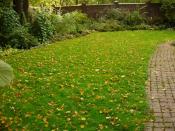Search
Login
Ways to preserve the outdoor stationary pool for the winter, how to properly prepare the pool for wintering, specialist advice
The main threat to outdoor pools is considered to be winter, when unattended water in the pool bowl, assuming a solid state of aggregation, can violate its integrity. That is why in harsh climates, maintaining the outdoor pool's health requires certain measures aimed at ensuring the pool's health for a long period of time. And preservation of the pool for the winter will help in this, the implementation of which, according to experts, will protect your artificial pond from damage.
Content
- The need for winter conservation of the outdoor pool
- Winter conservation. Which way to prefer?
- The sequence of activities for preparing the pool for the winter
- Why ice buffers?
- Protective covering. Choose the right one video
- Pool conservation. Alternative way
The need for winter conservation of the outdoor pool
It would seem that there is no simpler solution than to empty the pool bowl completely and leave it in this state for the winter. But studies show that soil located in the immediate vicinity of the pool, undergoing repeated freezing and thawing, increases the load on the pool walls, leading to their rapid destruction. Leaving for the winter a pool filled with canned water, you can not be afraid for its safety, since water, which has turned into ice at low temperatures, plays the role of a kind of shock absorber that will protect the bowl of the outdoor pool in winter from changes in soil configuration.

Winter conservation. Which way to prefer?
Many years of experience in operating stationary swimming pools for summer cottages allows us to identify several ways to preserve them in the winter, each of which has certain nuances related, in particular, to the need to empty water from the pool. And the first method will be considered, which is recognized as more thorough and durable, and which implies at the first stage a complete discharge of water with subsequent filling.

The sequence of activities for preparing the pool for the winter
So, at the first stage, recognized as preparatory, the water that was in the pool during the summer period must be drained. Let us explain that the pool must be emptied in order to thoroughly clean the walls and bottom of the bowl of fat and mineral deposits accumulated during the bathing season, as well as debris and algae. When removing contaminants, it is advised that you use disinfectants that are suitable for covering the bowl of your pool and that are not capable of harming human health. We must not forget about the disinfection of all metal accessories of the pool, such as waterfalls, handrails and any other elements. After disinfection, according to sanitary safety requirements, the pool is rinsed from the chemical components of the detergent.

During that period of time when the pool is in an empty state, all minor elements of the pool equipment are removed, which, if the owner is not careful, can be damaged by low temperatures. First of all, we are talking about lighting fixtures built into the walls of the pool, and attachments, which also need to be dismantled and stored for storage in a warm place.

After dismantling, you can proceed to the next stage of preserving the pool with filling it with water in the normal mode and sequentially starting the filter unit, which is carried out according to the following algorithm: backwash sealing mode for 10-15 seconds filtration mode.

During the filtration process, it is necessary to add a specialized preservation compound (for example, Puripul from the Bayrol concern), which will protect the pool water from the growth of algae, accumulation of silt and lime deposits in the case of a slight delay in frost, and also simplify its cleaning after wintering. Next, the water is filtered for two to three hours.

Then the water is drained until its surface drops 10 cm below the return nozzle, de-energize the electrical equipment and proceed to one of the main stages of preparing the pool for the winter, dismantling the hydraulic system and the filtration unit. Details of the hydraulic system, which, due to their design features, cannot be dismantled, are exempted from water.
Having carried out the above measures, it is necessary to close the free ends of the drains with foam plugs, which are also located in nozzles remaining under water.

Why ice buffers?
It is important not to forget that with the onset of frost, water will turn into a solid state of aggregation, which will cause its volume to expand. This can cause damage to the walls of the pool. To avoid this nuisance, the so-called ice buffers or expansion joints, which reduce the pressure of ice on the walls of the pool, must be placed on the bottom of the bowl of a stationary or frame pool for the winter. The role of these compensators will cope with any objects that shrink in case of increased external pressure, such as plastic canisters, five-liter plastic water containers that can be half filled with sand, as well as tires and pieces of foam. If the compensators are excessively light and are located on the surface of the water, it is necessary to make them heavier using small sandbags so that they are in the water column. It is forbidden to use metal products as a weighting agent, since they can cause rust left on the pool walls.

The resulting water mirror is advised to be covered using the so-called universal coatings, which in the summer period protect the pool water from pollution, and in winter become one of the elements of the conservation system. If the coating is designed for use only in winter, then it should have certain performance characteristics that will allow it to withstand the weight of snow blockages. It is forbidden to cover the surface of the canned pool with wooden or metal structures, as they will significantly increase the load on the pool, which is not the purpose of conservation and, moreover, is contraindicated.

Protective covering. Choose the right one
Common types of materials used for these purposes are:
1. Heat-insulating bubble materials capable of accumulating solar heat;
2. Automatic shutters that prevent small children and animals from accidentally getting into the water and saving on heating systems;

3. Plastic pavilions, for the manufacture of which aluminum profiles and polycarbonate are used;

4. Awning materials, such as tarpaulins, which protect water from atmospheric precipitation and temperature changes.
Correct re-preservation of the pool is possible only after independent melting of ice inside the bowl.

Pool conservation. Alternative way
As mentioned earlier, there is another way of preserving the pool, which does not imply draining the water remaining in the bowl after the end of the swimming season. Except for this nuance, this preservation method is no different from the previous one and is based on bringing the water remaining after the swimming season to certain pH values \u200b\u200b(from 7.2 to 7.6) and adding shock doses of tableted or granular chlorine according to the instructions for use of your pool . The further sequence of actions for conservation is identical to that described in the previous method.






